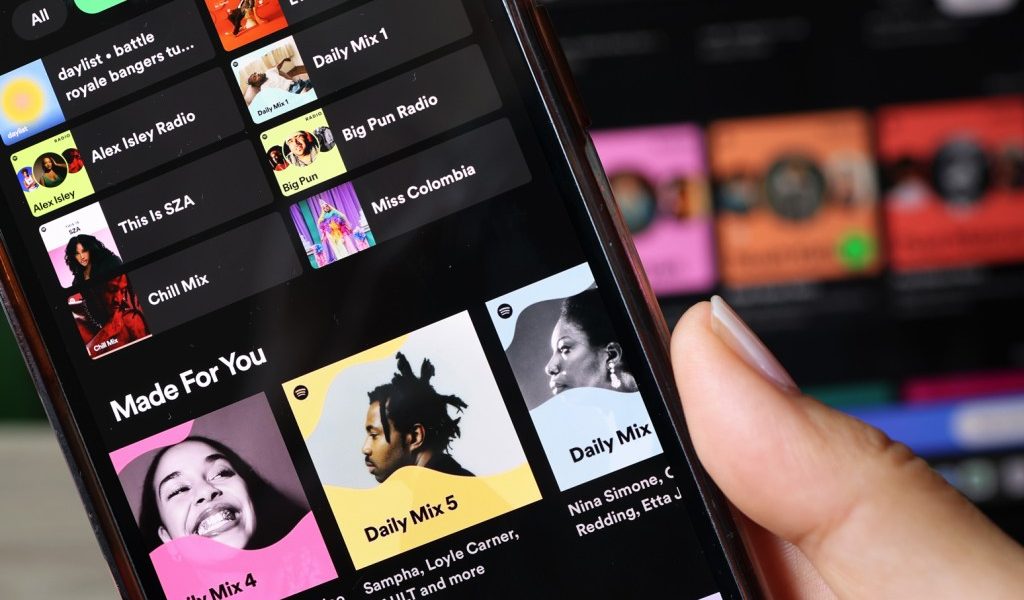Spotify consistently outperforms its competitors in the music subscription arena, achieving significantly higher levels of user engagement than platforms like Apple Music and Amazon Music. This remarkable engagement level is a testament to Spotify’s effective strategies in retaining listener interest and loyalty.
According to a recent MusicWatch survey conducted in the second quarter of 2024, the average Spotify Premium subscriber dedicated an impressive 4.9 hours each week to streaming music, clearly surpassing the numbers reported by its closest rivals. For instance, Apple Music users averaged just 2.3 hours, while Amazon Music Unlimited and Amazon Prime users spent only 2.0 and 1.3 hours, respectively. This consistent trend over the past five years highlights Spotify’s dominance in the streaming music industry, with a typical engagement advantage of 2.0 to 2.5 times compared to its nearest competitor.

Spotify executives have referred to their platform as “the Spotify machine,” a system where various content verticals collaborate to enhance the user experience and boost overall engagement levels. The integration of podcasts into the platform, a natural extension of its audio-centric approach, plays a crucial role in increasing the time users spend listening. Additionally, the introduction of audiobooks in 2023 further diversifies the content offerings, keeping listeners engaged for longer periods. Innovative features like Spotify Wrapped and Discover Weekly are designed to amplify user interaction and maintain listener interest year-round.
Statements from Spotify’s leadership indicate that their engagement strategy is yielding positive results. In November, CEO Daniel Ek confirmed that “overall, Spotify keeps bringing up engagement and bringing down churn,” referring to the subscriber loss metric crucial for subscription services. Earlier in July, Ek remarked on the “healthy MAU engagement trends year-over-year,” showcasing the company’s commitment to enhancing user retention and satisfaction.
Despite these optimistic projections from Spotify, data from the company’s own reports reveal that the average global user’s listening time has remained relatively stable over the past six years. In 2024, the average monthly listening hours per user was recorded at 24.8 hours, a slight decrease from 25.2 hours in 2023. This trend mirrors similar figures from previous years, indicating that while Spotify attracts new users, the average time spent listening has not seen significant growth, encompassing all content types including music, podcasts, and audiobooks.

This leads to a compelling question: why is there a discrepancy between Spotify’s claims of growing engagement and the static numbers reflected in their reports? One possibility is that while overall engagement has plateaued, it may have increased among specific user segments. According to Russ Crupnick from MusicWatch, it appears that the newer users in the U.S. tend to be lighter users, which could dilute the listening time averages of more engaged long-term users. As Spotify continues to attract new listeners, the average listening duration may remain stable, given the influx of less-active users.
Moreover, geographical factors could significantly influence listening habits, particularly based on Spotify’s market presence duration. In a statement made in July, Ek characterized engagement levels in mature markets as “high,” while describing emerging markets as “different.” This nuanced language suggests that user engagement varies depending on how long Spotify has operated in particular regions, reflecting diverse cultural and behavioral patterns in music consumption.
Nonetheless, in the U.S., the time listeners dedicate to music on Spotify has remained “reasonably” consistent over the years, according to Crupnick. Interestingly, he points out that Spotify’s weekly listening time was even higher several years ago, indicating potential changes in user behavior among late adopters who may be less engaged with the platform.
It is essential to highlight that MusicWatch’s data specifically excludes podcast and audiobook listening. If Spotify has succeeded in maintaining stable music listening hours, it stands to reason that the additions of podcasts and audiobooks have contributed to incremental engagement. Spotify’s exclusive agreement with The Joe Rogan Experience has proven particularly effective, as it propelled Spotify to become the leading podcast network in the U.S. by the second quarter of 2023. According to the Infinite Dial 2025 report by Edison Research, Spotify ranked second in podcast listening, behind YouTube, capturing 26% of the market compared to YouTube’s 33% and Apple Podcasts’ 14%.
In the realm of subscription services, engagement reigns supreme. High engagement translates to increased subscription rates, reduced churn, and an enhanced lifetime value (LTV) for subscribers. When users are more engaged, companies gain the confidence to implement price hikes, as Spotify has recently undertaken, and introduce premium tiers, which offer additional features and services at a higher price point.
The capability to keep users engaged—outperforming competitors—serves as a significant competitive advantage. One of the reasons Spotify enjoys a market capitalization exceeding $110 billion is that investors perceive it as a “best in class” service, justifying its substantial valuation and share price.
The music subscription market is witnessing a surge in product innovation. For example, Apple Music has recently rolled out three new live global radio stations, while Amazon Music Unlimited now supports hands-free listening through Alexa. Both platforms offer high-quality audio without additional costs. Nevertheless, Spotify has excelled in ensuring users remain engaged, keeping listening times at the forefront of its competitive strategy.






